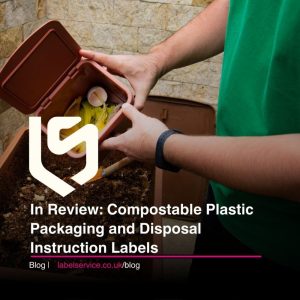Climate change and population growth are increasing pressure on our water resources.
The latest regional water resources plan states we will need an additional 4,000 million
litres of water a day by 2050, almost a third (28.5%) of current public water supplied in
England. As outlined in the Environment Agency Review of England’s emerging regional
water resources plans, over half of this will need to come from reducing demand for water
– 2,000 million litres of water per day.
The UK government’s 2021 Written Ministerial Statement on reducing demand for water
included an action “to make regulations to introduce a mandatory water efficiency label to
inform consumers and encourage the purchase of more water efficient products for both
domestic and business use”.
The proposals – announced in response to a public consultation on personal water usage – will balance the growing demand on national supplies with the ambitions in the 25 Year Environment Plan to achieve clean and plentiful water. They are also key to the Government’s 2050 net zero target by reducing energy consumption in homes as heating water accounts for approximately 17% of an average household’s energy use. The government is seeking views on their proposal to introduce a Mandatory Water Efficiency Label in the UK via secondary legislation under section 52 and Schedule 6 of the Environment Act 2021.
The act requires a relevant national authority to consult any persons the authority considers appropriate and have regard to the extent to which the proposed regulations are likely to reduce the product’s impact on the natural environment at any stage of its production, use or disposal, the environmental, social, economic or other costs of complying with the regulations, and whether exemptions should be given, or other special provision made, for smaller businesses.
The Label
A Mandatory Water Efficiency Label will give consumers the information they need to make informed decisions when purchasing new water using products for their home. It will also help developers and water companies to improve water efficiency in buildings. They propose that the products in respect of which a water efficiency label should be required are: toilets, urinals, kitchen sink taps, bathroom basin taps, non-electric shower outlet devices and shower assembly solutions, dishwashers, washing machines and combination washer-dryers. These are defined in
ISO 31600:2022 and covered by similar international labelling schemes.
It is proposed to introduce a standalone water efficiency label. This option will ensure that water efficiency ratings are clearly identifiable on products for consumers and this option was supported by stakeholders. A standalone water efficiency label introduced via regulations made using powers conferred by the Environment Act 2021 will enable us to make water the focus of the label, choose the way water efficiency information is presented and apply it to the water using products intended under the proposals.
The proposal includes introducing dual labels for washing machines, dishwashers and washer/dryers, which already have an energy label. Of the products listed above, dishwashers, washing machines and washer-dryers already come under the UK Energy Label. Some water use information is included on this label, but this is not considered clear and simple for consumers (meaning it is a single number and not a banded approach). Water products which are not energy related do not have this label and therefore no water use information linked to them.
Stakeholders supported dual labelling in pre-consultation workshops, however some expressed concern around the increased regulatory burden on manufacturers from introducing a mandatory water efficiency label for products requiring a UK Energy Label which already includes some water efficiency information (for example, washing machines dishwashers and washer-dryers). However, dual labelling is common in many countries.
It is proposed that the preferred water efficiency label should be:
- a separate or standalone water label
- simple in design – including minimal icons if necessary
- indicate the water flow rate or consumption per cycle (X litres/min)
- follow the approach for the existing energy label design, but be identifiable through, for example, a different colour scale
The regulations which introduce the mandatory water efficiency label will set out the label design and specifications based on ISO3600:2022. This will include:
- rating representation (for example bars and colours), design of label, where the label needs to be placed and size of the label, font type and font size
- language, for example all information in English
- water efficiency label information, for example rating, brand, model number, water consumption, type of product, number of place settings (dishwashers), rated capacity (washing machine or washer-dryer, for example place settings per kg load of washing)
- additional label information (for example test standard applied to the product, name of supplier, intended application, label dimensions, colour specifications, registration number, QR code)
Label Display
The regulations proposed to make to introduce the mandatory water efficiency label using powers in the Environment Act 2021 can apply to persons connected with the manufacture, import, distribution, sale or supply of the product. They propose to place the following obligations on the following persons:
- the supplier that first places a regulated product on the market, or puts it into service, would be responsible for self-assessing the water efficiency rating of their product(s) and labelling them accordingly as prescribed by the requirements of the regulations This extends to any means of online selling, distance selling, hire and hire purchase
- supplier is considered to be the manufacturer, authorised representative or importer of a product which requires a mandatory water efficiency label
- the dealer (for example product wholesaler) or retailer (for example storefront or online retailer direct to the public) would have obligations to clearly display the mandatory water efficiency labels provided by suppliers with their products when displaying and selling them, in line with what is specified in the regulations. This includes in store and via distance selling methods such as internet sales and catalogues
The water efficiency label must be visible to the customer. The proposals for manufacturers and retailers in Annex D. In summary these are:
- the label should be produced or printed in full or proportionately larger, in accordance with the label specifications, or in any case of a size such that it can be reasonably be read and comprehended by consumers
- for show rooms, if an item is displayed without packaging, anywhere in a showroom or display window the item must have the full label displayed on it or directly adjacent to it, for example next to the price
- advertising should include the thumbnail and full label
Findings by the Energy Savings Trust (EST) suggest a mandatory water efficiency labelling scheme, linked to building regulations and minimum standards (which includes setting a maximum flow rate for products), to be the most cost-effective approach for delivering water efficiency savings. This combined approach also came out on top for water savings, carbon savings and cost savings to consumers. The modelling in this analysis introduced a maximum flow rate at year 5 after introducing a mandatory water efficiency label, with revisions made to tighten that flow rate at years 8 and 11.
Enforcement
Effective enforcement is fundamental to ensuring policy objectives are delivered to reduce public water consumption and to enforce the requirements of a mandatory water efficiency labelling scheme.
Provisions in the Environment Act 2021 provide a comprehensive framework for the relevant national authority to specify through secondary legislation a detailed enforcement regime. Certain aspects of the enforcement regime follow precedents set by other laws and common practices where relevant.
The relevant national authority can retain enforcement functions or confer those functions on a regulatory body or bodies. Conferring those functions enables the enforcement authority to conduct relevant duties.
The 3 main function of the enforcement authorities should be to:
- monitor compliance: for example, by undertaking compliance checks on products, and in store displays
- investigate compliance: for example, by gathering further evidence to identify whether a party has breached the requirement to put a mandatory water efficiency label on a relevant water using product, due diligence, and reporting
- impose sanctions when a breach has been identified to bring businesses in scope back into compliance with the legislation, using civil sanctions set out in the Environment Act 2021
When determining a responsible regulatory body or bodies, the regulators should have:
- UK-wide remit to ensure that the enforcement authority has powers to operate across the territory of any potential application of the regulations
- capacity to regulate through established centres of expertise to deliver effective enforcement of the regulations
- capability and experience to deliver the functions of monitoring and investigating compliance and imposing civil sanctions when the requirements have been breached
Reducing Impacts on the Natural Environment
Abstraction of water for public water supply can have a significant impact on our rivers, particularly chalk streams. Around half of the 4,000 million litres of water a day needed by 2050 is driven by the need to leave more water in the environment. Introducing a mandatory water efficiency label aims to contribute to reducing the public demand for water. This should result in a number of positive environmental impacts including a saving per person of 1.5 litres/per person/per day (l/p/d) after 10 years, reaching 13l/p/d at 25 years, reducing the amount of water abstracted and so leaving more to support the natural environment. It will also support savings of 492,924 tonnes of carbon dioxide equivalent emissions (tCO2e) through reduced use of hot water in homes over ten years.
Environmental, Social and Economic Costs
The cost benefit ratio for the preferred option is 1:73 and is anticipated to cost government £4.1 million over a 10 year period, and manufacturers around £19.1 million over the same timeframe. There are not considered to be any environmental costs, only benefits, and there are not expected to be any costs experienced by the consumer. All financial savings have had a discount rate of 3.5% applied to them for the stated time period.
Introducing mandator water efficiency labelling will support meeting the proposed Water Demand Target. The total benefit of avoiding the need to undertake new supply schemes amounts to £875m in Present Value terms to 2037, and £3,340m to 2100. Addressing the cost of living, this policy could help reduce water bills by £125 million and energy bills by £147 million over 10 years (based on 2019 prices).
The development of the water efficiency labelling scheme and drafting of the regulations is likely to be concluded later in 2023 when the government will aim to lay the statutory instrument and an implementation period (for example 18 months), will be allowed to enable transition to the new requirements. It is estimated that the changes will come into force by early 2025. The government will work with industry to implement the scheme sooner, including encouraging water companies to promote the scheme and uptake of water efficient devices.
The label is at the centre of the policy pathway to deliver the proposed Water Demand Target under the Environment Act 2021. Water companies have been asked to set out how they can help promote this label and use it as part of incentive or rebate schemes.
At Labelservice we specialise in the manufacture of custom environmental labels. For more information about how we can help your business become environmentally friendly then please contact us today.

















